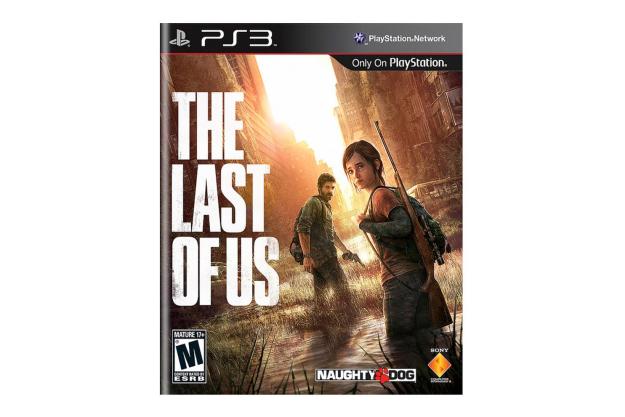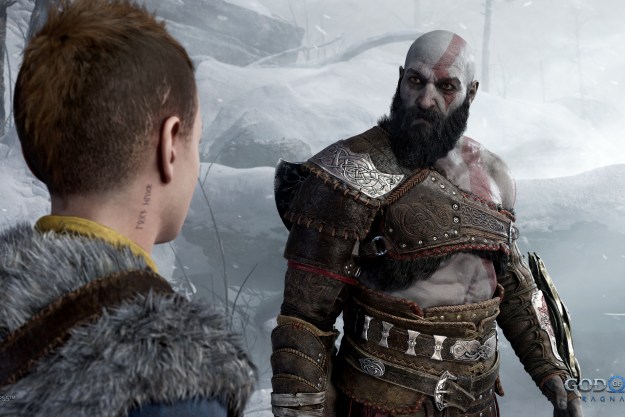
“Uneven combat can’t take away from one of the best stories ever told in gaming.”
- Immersive and fully realized world
- A mature and rich story
- The relationship between Joel and Ellie is memorable
- Uneven combat
- The multiplayer needs more content

Where Uncharted wanted you to believe in the adventure, The Last of Us wants you to believe in the relationship between the gruff and weathered Joel, and the young and still relatively innocent Ellie. That might seem like a predictable formula for storytelling, and in some ways it is, but adding the playable component elevates it to a level that makes for one of the most emotionally charged stories ever seen in video games.
Don’t Call Them Zombies
It all starts with an organism known as ophiocordyceps unilateralis, a parasitic fungus from the Cordyceps family. The fungus is parasitic, and can take control of the host’s nervous system in order to move it in a direction that will ensure further dissemination of more spores. Basically it can take over a host and force it to attack others. And the pant-soiling truth is that it’s a real thing, found in insects, generally in South and Central America.

The story begins 20 years after humanity has been forced into small quarantine zones and scattered communities fighting to survive. Civilization is a memory, and survival is almost all there is. There is a war brewing as well, although to call it a war with so few survivors left to fight it may be giving it too much weight. On one side are the forces controlling the quarantine zones, a militaristic faction that believes in order at all costs. On the other hand are the Fireflies, a militant group dedicated to bringing back an elected government. Stated ideals aside, there are no good or bad guys in the new world, just shades of despair.

Trust No One
What sets The Last of Us apart from other post-apocalyptic games is the high quality of the writing. It makes you form attachments to the characters, even despite their own actions. It is almost emotionally manipulative – you will care for these characters.
Joel is not a good man. Thanks to some clever writing and the unavoidable connection you typically form between yourself and any playable avatar, you find yourself rooting for him though. But he can be unlikable, and every time you think he will redeem himself, Joel will surprise you. Ellie, on the other hand, is just innocent enough that you can’t help but feel protective of her. From her inability to whistle to her fiery nature to her optimism, the writing for Ellie is so deep and layered that you will forget that she is really just an occasionally helpful AI NPC. Thankfully, as an AI she never becomes a hindrance.

There are deep themes at work here. Dark story threads help cast a pessimistic, but not unrealistic picture of humanity as a whole, many of which center around Ellie. You will want to see her safe, although Joel’s intentions are often more complicated.
Even when you think you’ve seen the story laid bare, it can surprise you and drag out a surprising emotional response several times throughout the 15 hour campaign (give or take). From humor to shock to the incredible conclusion that you probably won’t see coming, the story is not just good for a video game, it is good for any medium.
A Minor, but Familiar Complaint
The story is so strong that it’s easy to overlook some of the more flawed things. The Last of Us is a fantastic game, with pieces that border on brilliant. The combat, however, is not one of them.
This is a complaint Naughty Dog has heard before, and it is apt here as well. The combat isn’t bad by any means, it is just wholly unremarkable.

The gameplay also lacks some of the moments that made the Uncharted series so memorable – those “big” moments, like when a ship would suddenly begin to sink, a train derails, or an attack helicopter chases you across rooftops. The gameplay just becomes a function of the story, and one you’ll typically race through to discover the next plot point.
That Old, Familiar Feeling
The multiplayer component offers an interesting twist, but it is very much a secondary feature to the campaign – and a limited one at that.

As for the gameplay, you are limited in resources, from your bullets to the pieces you collect to craft items like medicine or Molotov Cocktails – a mechanic the campaign shares. Because of the limits, a run-and-gun approach is impractical, leading to a more tension filled hunt.

Conclusion
Minor quibbles with the combat aside, Naughty Dog proves once again that it is among the best in the business. It also once again pushes the envelope of what a video game can be. The writing and the story of The Last of Us are not just good by gaming standards, but good by the standards of any medium. It is a dark and mature tale, and while the obvious comparison is to Naughty Dog’s Uncharted series, the better comparison might be the brutally unforgiving stories from The Walking Dead. It is a mature story that will continue to push your conception of what a video game story can be, and it is easily among the year’s best releases thus far.
This game was reviewed on a PlayStation 3 using a copy provided by Sony.
Editors' Recommendations
- PlayStation 6: release date speculation, price, specs, and more
- How to use an external hard drive on PS5
- The Last of Us Part 2 Remastered: No Return tips and tricks for beginners
- The best PS5 accessories
- Sony’s latest partnership is a big move for PlayStation’s mobile future


